Product Description
The Reverse Osmosis (RO) system is a popular and effective water filtration method. It mainly consists of a multi-stage high-pressure pump, a reverse osmosis membrane element, a membrane shell (pressure vessel), a frame, and other components.
RO is a water purification process that uses a semi-permeable membrane to separate ions, unwanted molecules, and larger particles from water. The basic operation principle is the removal of impurities in the water through pressure, which forces the water through the semi-permeable membrane.
This system is designed to demineralize or deionize water, effectively eliminating contaminants from unfiltered water, or feed water. The main aim is to produce water that meets the requirements of use. It is widely utilized in both home and industrial settings to improve the quality of drinking water and to purify water for use in various industrial processes.
In essence, an RO system is an efficient and practical solution for producing high-quality purified water from virtually any water source.
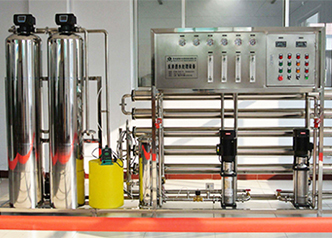
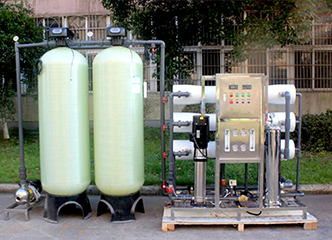
Technical parameters
Filtration accuracy (μm): 0.0001Desalination rate: up to 99.8%
Inlet water pressure: 0.2-4MpaWater production: 0.5-50 (m3/H)
Source water hardness: < 10mmol/LDischarge water hardness: ≤0.03mmol/L
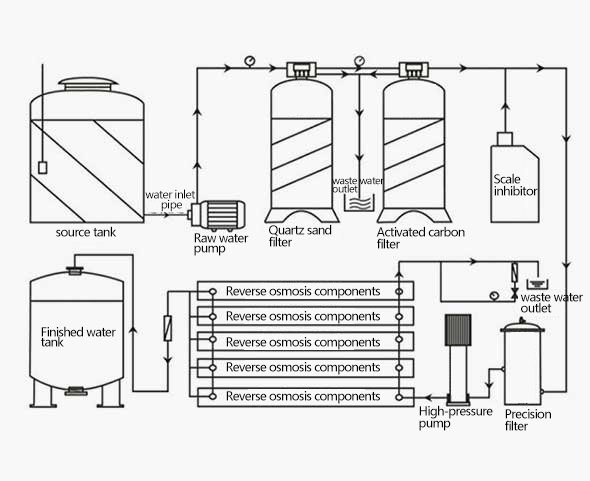
Process selection: single-stage reverse osmosis, double-stage reverse osmosis, stainless steel reverse osmosis equipment
Type: Engineering type, Industrial type, Business type
Working Principle
Reverse osmosis is a new modern technology for the treatment of pure water. The reverse osmosis element is used to improve the purity of the water and to remove impurities and salts contained in the water. Through the reverse osmosis membrane membrane on both sides of the pressure is different, by pressing the raw water through the reverse osmosis membrane, the salt concentration will be low to the concentration of salt in the direction of permeation, can reach the equilibrium state, is the osmotic pressure of the liquid. When the pressure on one side of the brine contains for the other side of the osmotic pressure, it will occur in the opposite direction of the flow, and the reverse osmosis process is produced.
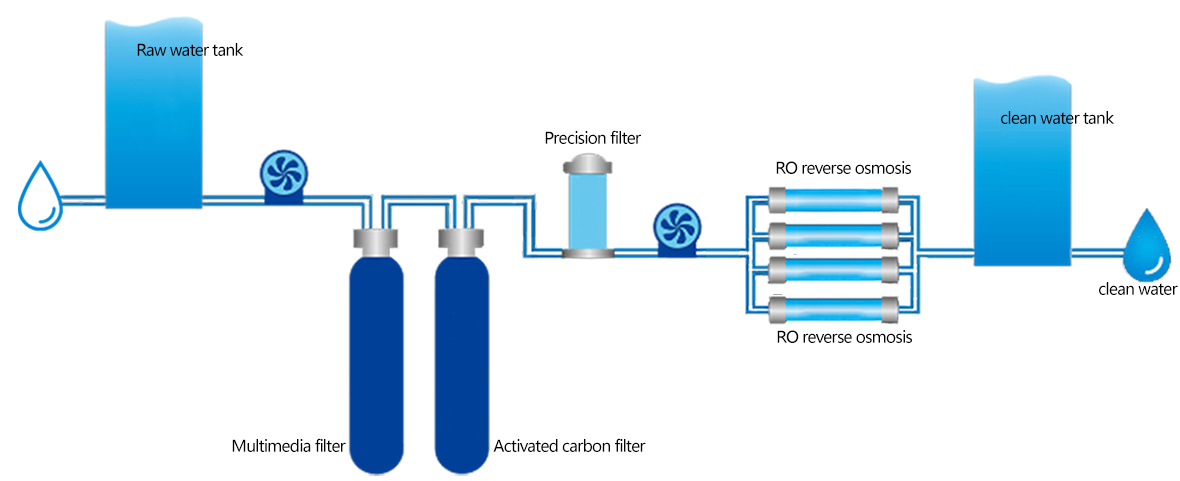
Product Advantages
1.Improved Water Quality: Reverse osmosis can remove excess lead from water, making it safe and pure to drink. It restricts sodium molecules from passing through the membrane, resulting in sodium-free, clean water for cooking and drinking.
2.Comprehensive Filtration: Among different types of water filtration systems, reverse osmosis is considered one of the most comprehensive. It effectively removes all contaminants from water.
3.Improved Taste: The reverse osmosis process improves the taste, odor, and appearance of water. Contaminants like lead, chlorine, fluoride, and other impurities that can affect the taste and smell of water are eliminated, leaving you with naturally tasting water.
4.Health Benefits: An RO system provides added health benefits by ensuring impurities such as chlorine, lead, and fluoride, which could potentially harm your health, are removed.
5.Energy Efficient: The system operates with low energy consumption, making it cost-effective in the long run.
6.Easy Maintenance: The system is easy to maintain, making it suitable for both domestic and industrial use.
7.Space Saving and Expandable: Despite its sophisticated technology, an RO system is compact and doesn't occupy much space. The system is scalable, meaning it can be expanded or reduced based on your specific needs.
Applications
1.Residential and Commercial Settings: RO equipment can be installed in homes, offices, or restaurants to ensure the quality of water supply and provide a safe source of drinking and cooking water.
2.Food and Beverage Industry: RO technology is widely used in the food and beverage industry, both to provide high-quality water for production and, in some cases, as part of the production process itself, such as in the concentration of juices.
4.Energy and Power Industry: Pure water is a key requirement for steam turbines in power plants, and RO equipment can be used here to prevent mineral corrosion and build up.
5.Sea Water Desalination: RO technology is a major technique for desalinating seawater, turning salty seawater into drinkable fresh water.
6.Pharmaceuticals: The pharmaceutical industry requires pure water to ensure the quality of drug production, and RO equipment offers a viable solution.
7.UV Water Sterilizers: Used in conjunction with UV water sterilizers to further improve the quality of treated water.
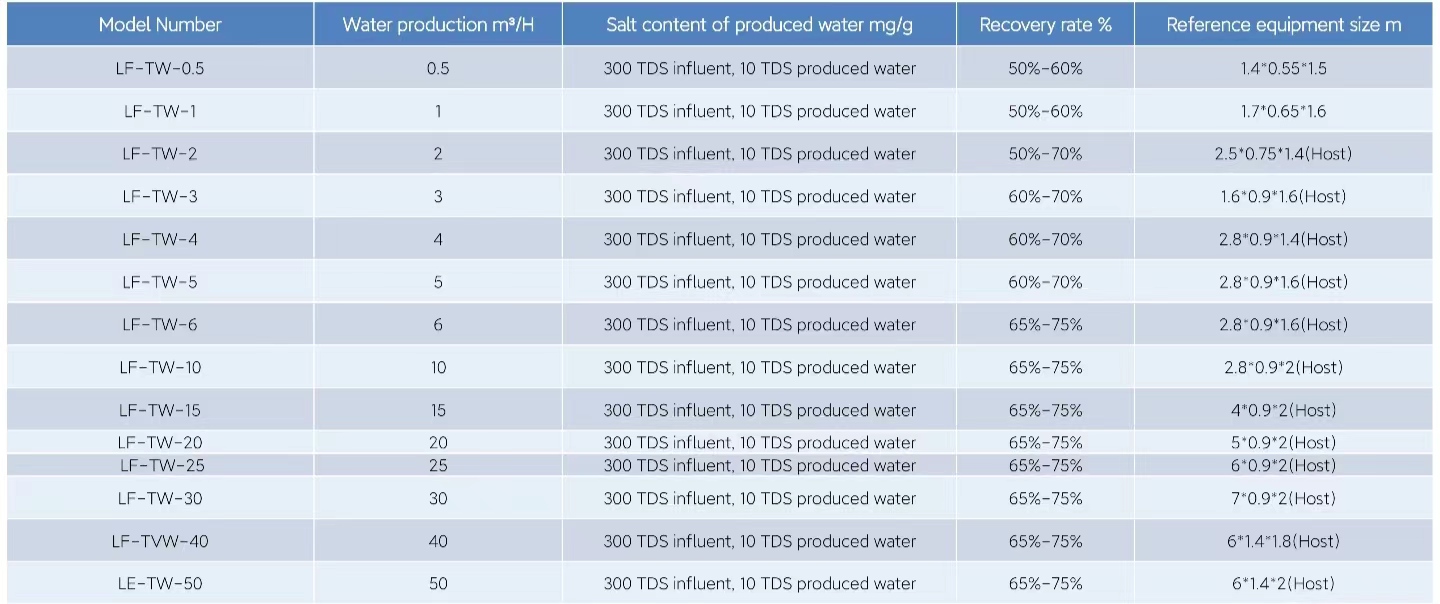
RELATED PRODUCTS
Membrane element















